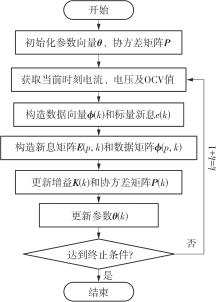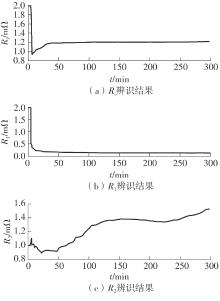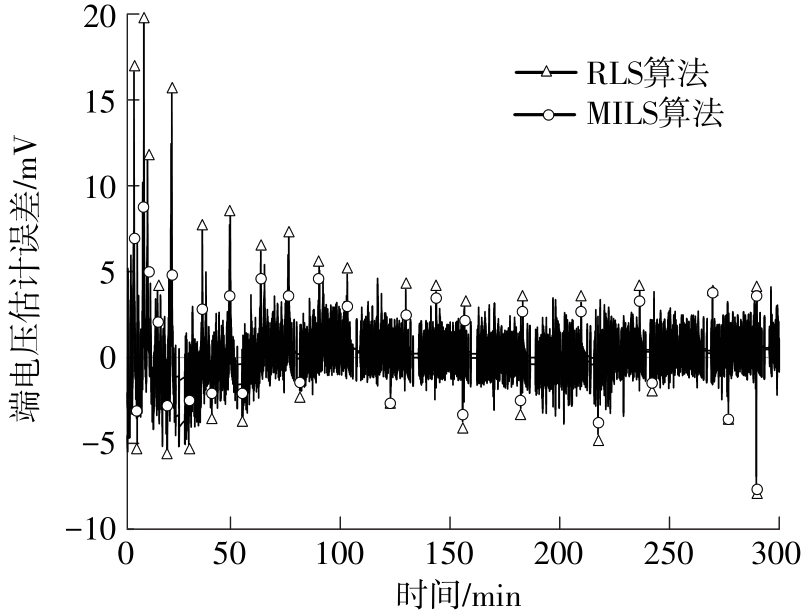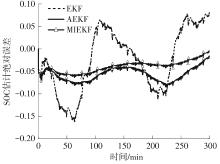| 1 |
王榘,熊瑞,穆浩 .温度和老化意识融合驱动的电动车辆锂离子动力电池电量和容量协同估计[J].电工技术学报,2020,35(23):4980-4987.
|
|
WANG Ju, XIONG Rui, MU Hao .Co-estimation of lithium-ion battery state-of-charge and capacity through the temperature and aging awareness model for electric vehicles[J].Transactions of China Electrotechnical Society,2020,35(23):4980-4987.
|
| 2 |
HE W, WILLIARD N, CHEN C C,et al .State of charge estimation for electric vehicle batteries using unscented Kalman filtering[J].Microelectronics Reliability,2013,53(6):840-847.
|
| 3 |
BIAN C, YANG S, MIAO Q .Cross-domain state-of-charge estimation of Li-ion batteries based on deep transfer neural network with multiscale distribution adaptation[J].IEEE Transactions on Transportation Electrification,2021,7(3):1260-1270.
|
| 4 |
ZHAO Y F, XU J, WANG X,et al .The adaptive fading extended Kalman filter SOC estimation method for lithium-ion batteries[J].Energy Procedia,2018,145:357-362.
|
| 5 |
WEI Z B, ZHAO J Y, ZOU C F,et al .Comparative study of methods for integrated model identification and state of charge estimation of lithium-ion battery[J].Journal of Power Sources,2018,402:189-197.
|
| 6 |
WANG L M, LU D, LIU Q,et al .State of charge estimation for LiFePO4 battery via dual extended Kalman filter and charging voltage curve[J].Electrochimica Acta,2019,296:1009-1017.
|
| 7 |
罗琴琴,苏建徽,林志光,等 .基于递推最小二乘法的虚拟同步发电机参数辨识方法[J].电力系统自动化,2019,43(1):215-221.
|
|
LUO Qinqin, SU Jianhui, LIN Zhiguang,et al .Parameter identification method for virtual synchronous generators based on recursive least square algorithm[J].Automation of Electric Power Systems,2019,43(1):215-221.
|
| 8 |
杜帮华,张宇,吴铁洲,等 .梯次利用锂离子电池等效模型参数在线辨识方法[J].储能科学与技术,2021,10(1):342-348.
|
|
DU Banghua, ZHANG Yu, WU Tiezhou,et al .An online identification method for equivalent model parameters of aging lithium-ion batteries[J].Energy Storage Science and Technology,2021,10(1):342-348.
|
| 9 |
卫志农,原康康,成乐祥,等 .基于多新息最小二乘算法的锂电池参数辨识[J].电力系统自动化,2019,43(15):139-145.
|
|
WEI Zhinong, YUAN Kangkang, CHENG Lexiang,et al .Parameter identification of lithium-ion battery based on multi-innovation least squares algorithm[J].Automation of Electric Power Systems,2019,43(15):139-145.
|
| 10 |
ZHAO B G, ZHANG X K, LIANG C L .A novel parameter identification algorithm for 3-DOF ship maneuvering modelling using nonlinear multi-innovation[J].Journal of Marine Science and Engineering,2022,10(5):581.
|
| 11 |
魏金科,安小宇 .多新息模型辨识PMSM双曲正切滑模定位控制[J].机械设计与制造,2022(1):164-167.
|
|
WEI Jin-ke, AN Xiao-yu .Hyperbolic-tangent sliding mode position control of multi-innovation model identification permanent magnet synchronous motor[J].Machinery Design & Manufacture,2022(1):164-167.
|
| 12 |
吴定会,张建宇,沈艳霞,等 .基于多新息近似最小一乘算法PMSM参数辨识[J].系统仿真学报,2018,30(3):1001-1007.
|
|
WU Dinghui, ZHANG Jianyu, SHEN Yanxia,et al .Parameter identification for PMSM based on multi-innovation approximate least absolute deviation identification algorithm[J].Journal of System Simulation, 2018,30(3):1001-1007
|
| 13 |
谢朔,陈德山,初秀民,等 .改进多新息卡尔曼滤波法辨识船舶响应模型[J].哈尔滨工程大学学报,2018,39(2):282-289.
|
|
XIE Shuo, CHEN Deshan, CHU Xiumin,et al .Identification of ship response model based on improved
|
|
multi-innovation extended Kalman filter[J].Journal of Harbin Engineering University,2018,39(2):282-289.
|
| 14 |
GUO R H, SHEN W X .A review of equivalent circuit model based online state of power estimation for lithium-ion batteries in electric vehicles[J].Vehicles,2022,4(1):1-29.
|
| 15 |
SU J, LIN M S, WANG S L,et al .An equivalent circuit model analysis for the lithium-ion battery pack in pure electric vehicles[J].Measurement & Control,2019,52(3/4):193-201.
|
| 16 |
MENG J H, STROE D I, RICCO M,et al .A novel multiple correction approach for fast open circuit voltage prediction of lithium-ion battery[J].IEEE Transactions on Energy Conversion,2019,34(2):1115-1123.
|
| 17 |
REN B Y, XIE C X, SUN X D,et al .Parameter identification of a lithium-ion battery based on the improved recursive least square algorithm[J].IET Power Electronics,2020,13(12):2531-2537.
|
| 18 |
黄敬尧,李凌峰,张扬,等 .基于FF-MILS和UKF算法的锂电池SOC估算[J].电源技术,2021,45(6):711-715,735.
|
|
HUANG Jingyao, LI Lingfeng, ZHANG Yang,et al .Estimation of state of charge for lithium-ion battery based on multi-innovation recursive least square algorithm and unscented Kalman filter[J].Chinese Journal of Power Sources,2021,45(6):711-715,735.
|
| 19 |
孙金磊,邹鑫,顾浩天,等 .基于FFRLS-EKF联合算法的锂离子电池荷电状态估计方法[J].汽车工程,2022,44(4):505-513.
|
|
SUN Jinlei, ZOU Xin, GU Haotian,et al .State of charge estimation for lithium-ion battery based on FFRLS-EKF joint algorithm[J].Automotive Engineering,2022,44(4):505-513.
|
| 20 |
巫春玲,胡雯博,孟锦豪,等 .基于最大相关熵扩展卡尔曼滤波算法的锂离子电池荷电状态估计[J].电工技术学报,2021,36(24):5165-5175.
|
|
WU Chunling, HU Wenbo, MENG Jinhao,et al .State of charge estimation of lithium-ion batteries based on maximum correlation-entropy criterion extended Kalman filtering algorithm[J].Transactions of China Electrotechnical Society,2021,36(24):5165-5175.
|
| 21 |
雷克兵,陈自强 .基于改进多新息扩展卡尔曼滤波的电池SOC估计[J].浙江大学学报(工学版), 2021,55(10):1978-1985,2001.
|
|
LEI Ke-bing, CHEN Zi-qiang .Estimation of state of charge of battery based on improved multi-innovation extended Kalman filter[J].Journal of Zhejiang University (Engineering Science),2021,55(10):1978-1985,2001.
|

























